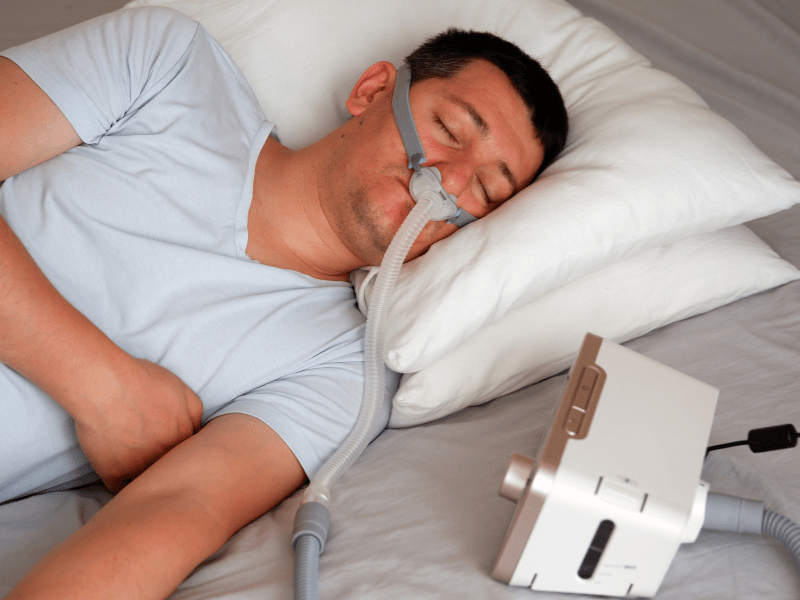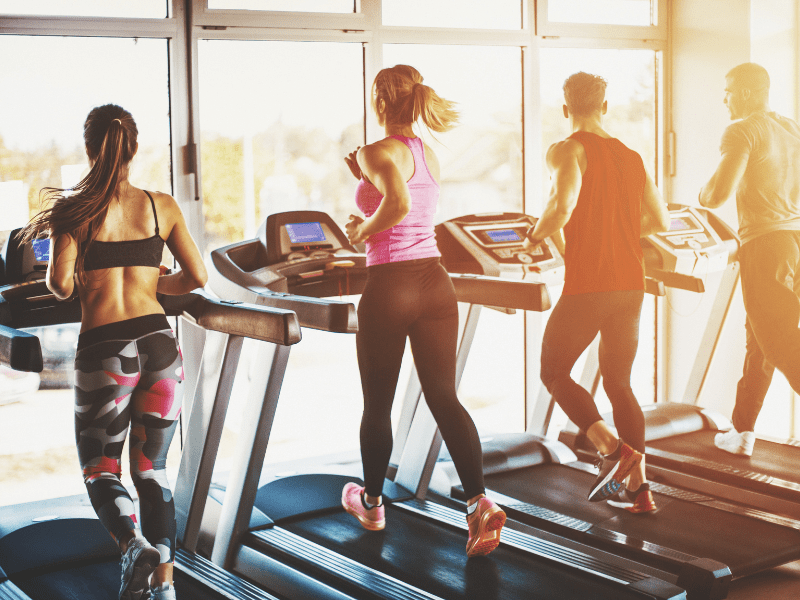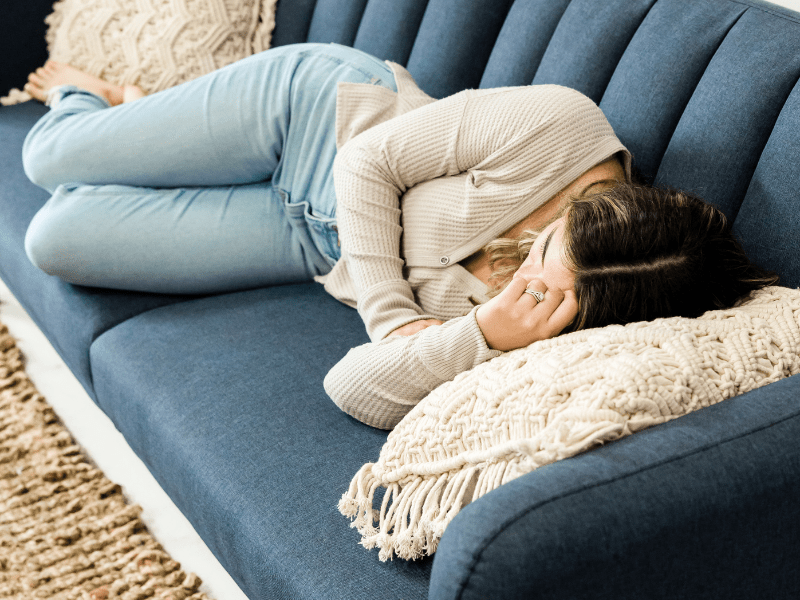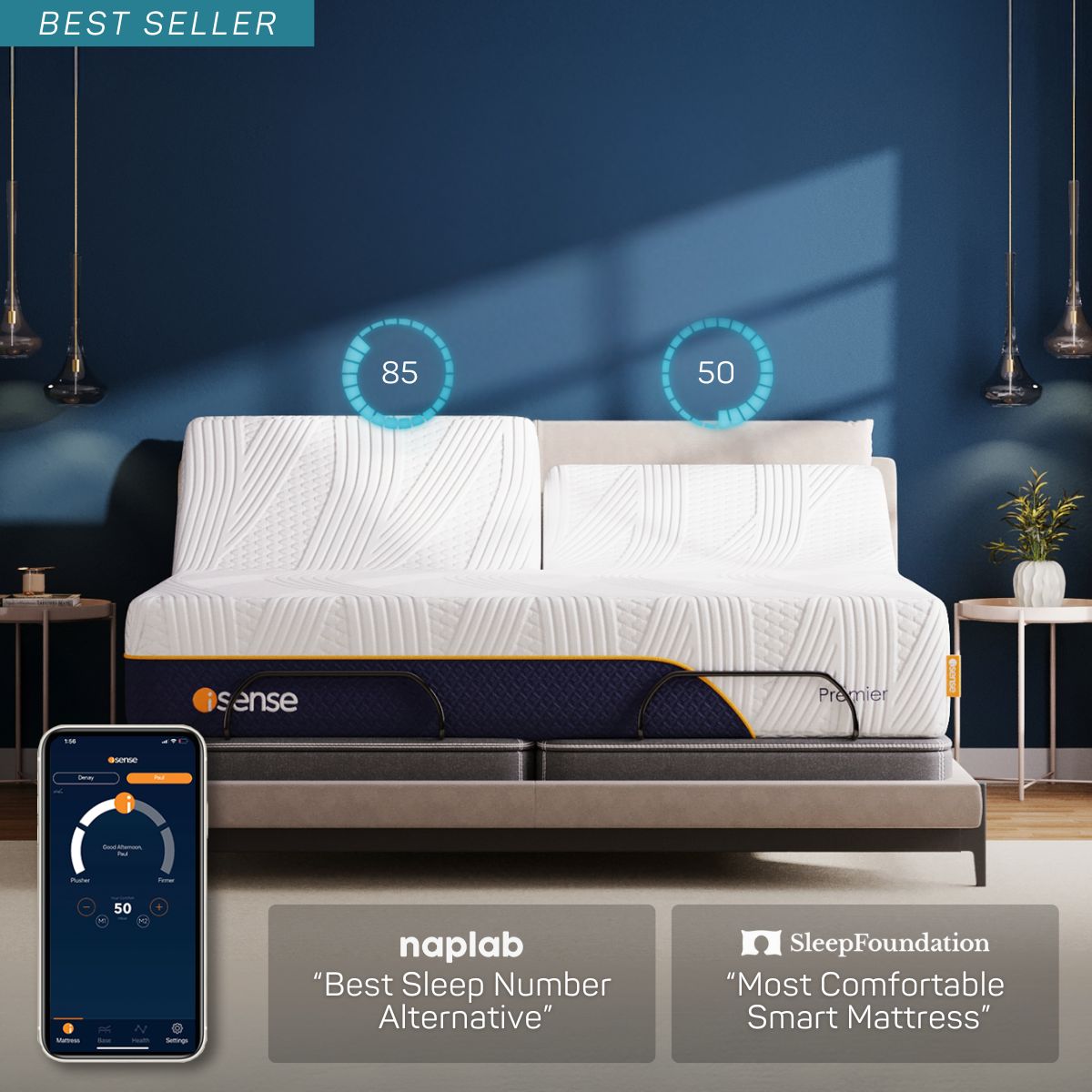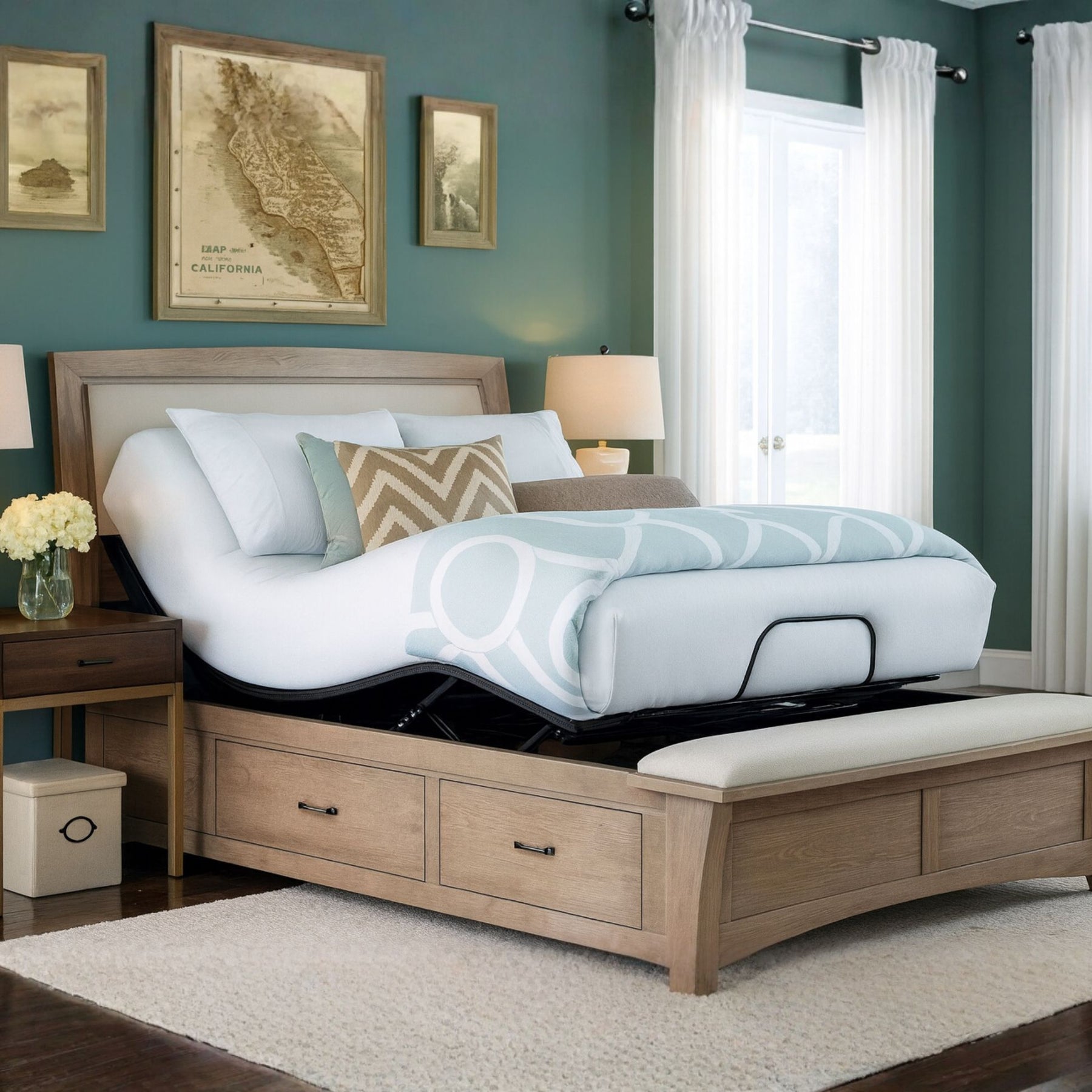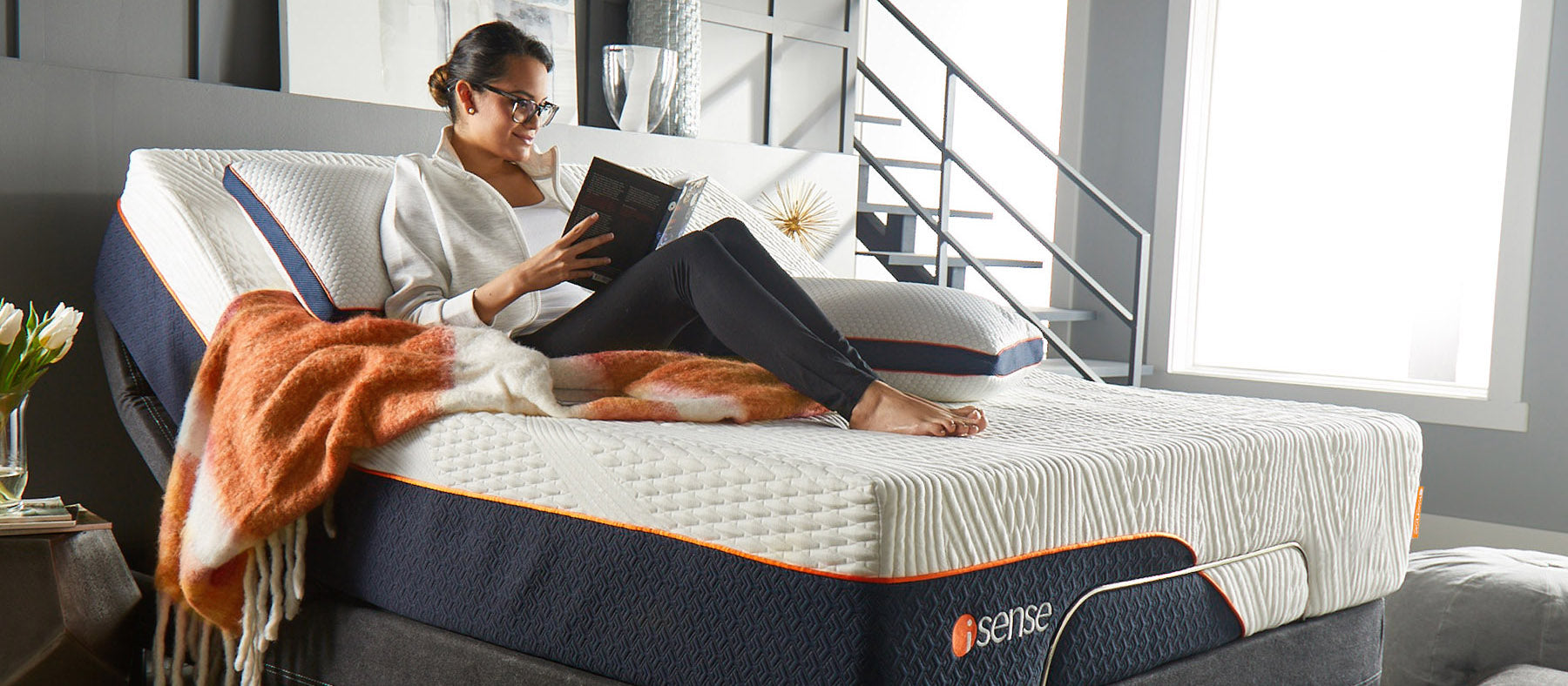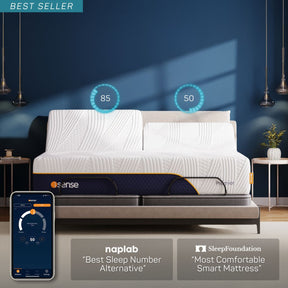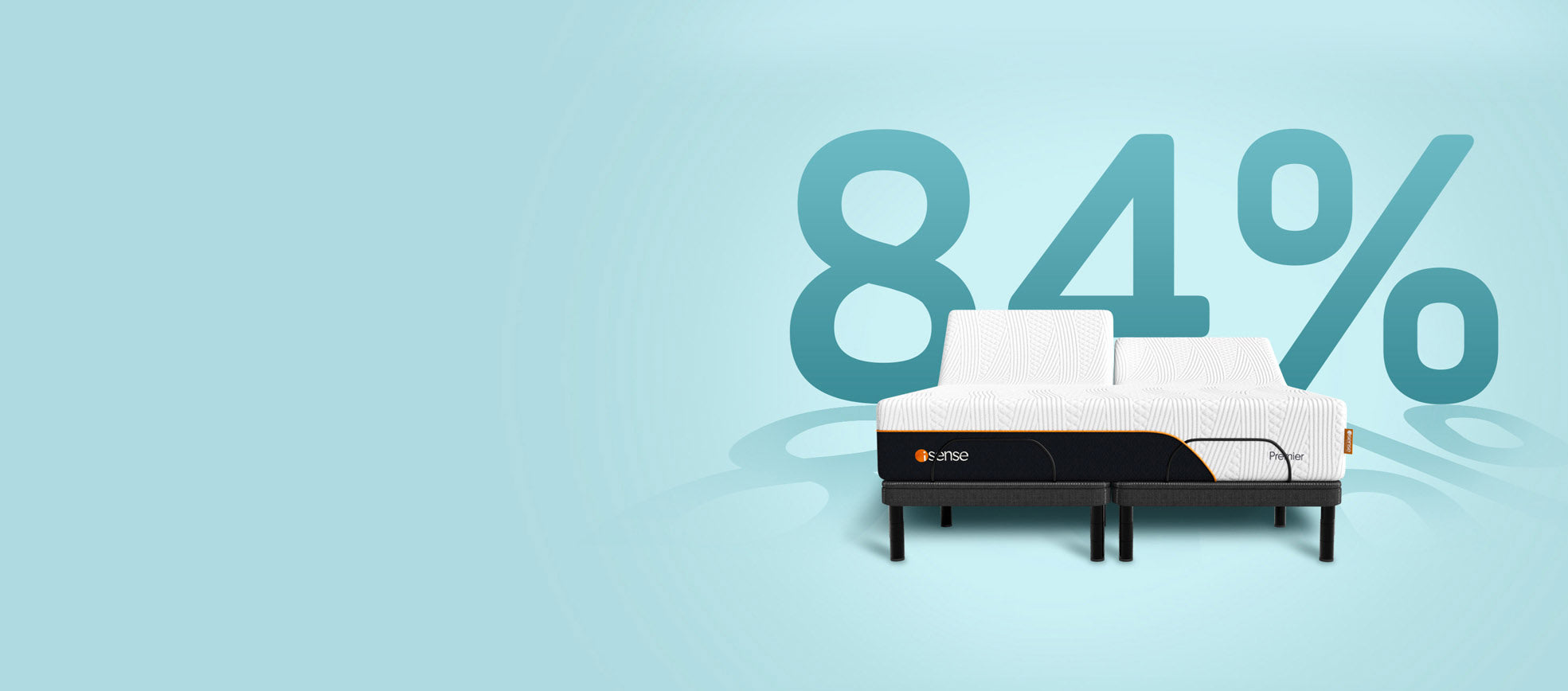Are sleepless nights and breathing difficulties making life difficult for you? A BiPAP machine could be a game-changer. This compact, non-invasive device uses positive pressure ventilation to ease your breathing especially during sleep.
Dive into our in-depth guide to understand what a BiPAP machine is, why you might need one, how it works, and the steps involved in its use. Don't let trouble breathing disrupt another night—your solution could be just a few clicks away!
What is a BiPAP Machine?
A BiPAP machine, short for bilevel positive airway pressure, is a type of therapy device used to treat sleep apnea and other breathing disorders.
Explanation of BiPAP
A BiPAP machine is a small device like a lunchbox. It helps with your breathing if you have trouble sleeping. The machine keeps track of how you breathe at night and gives this data to doctors.
This lets them see if the therapy works well for you and make any changes needed. You wear a face mask, nasal mask, or nasal plugs that connect to the device through a tube. This is not scary––it's non-invasive ventilation (NIV) therapy! People who need help breathing but can still breathe on their own use BiPAP machines often.
A lot of people with sleep apnea use it too! And those living with COPD? They also get aid from these machines because they give pressurized air via masks to regulate breathing patterns.
How it works
A BiPAP machine helps with breathing. Here's how it works:
- The user puts on a mask or nasal plugs. These parts are hooked to the BiPAP machine.
- The machine sends air into the person's lungs. It uses two levels of air pressure.
- One level of air pressure kicks in when the person breathes in. This makes it easier for them.
- The other level of air pressure comes into play when the person breathes out. This helps keep their airway open.
- So, during sleep, this unit makes sure that the person keeps breathing right and gets enough air.
- If there is any change in how the user is breathing, the machine adjusts itself.
- It comes in a small size like a lunchbox, so one can carry it around easily.
- If a user has sleep apnea or COPD, this machine will help them breathe better during their sleep on their mattress.
Why You Might Need to Use a BiPAP Machine
BiPAP machines may be necessary if you have conditions such as sleep apnea, central sleep apnea, heart disorders, lung disorders, or neurological disorders that require noninvasive ventilation therapy.
Indications for use
A BiPAP machine is needed for some health problems. It helps people breathe better. Here are the main times when a BiPAP machine is used:
- You have sleep apnea: This is when your breathing stops and starts while you sleep. The BiPAP machine can keep your airway open and help you breathe.
- You're not getting enough oxygen: If your body isn't getting all the oxygen it needs, a BiPAP machine can help get more air into your lungs.
- You can't get rid of carbon dioxide: Sometimes, too much carbon dioxide builds up in your body. The BiPAP machine can remove it so that you feel better.
- You have a blockage in your airway: The BiPAP machine can make sure that enough air gets past any blockages.
- Your lungs are sick: If you have problems like hypoxemia or hypercapnia, this machine helps by giving extra support to your lungs.
Conditions it can treat
BiPAP machines can help treat various conditions, such as:
- Sleep apnea: BiPAP machines are commonly used to treat sleep apnea, a condition where a person's breathing is interrupted during sleep.
- Respiratory disorders: BiPAP machines can assist individuals with respiratory disorders, such as chronic obstructive pulmonary disease (COPD) and asthma.
- Neuromuscular diseases: BiPAP machines can provide respiratory support for individuals with neuromuscular diseases, including muscular dystrophy and amyotrophic lateral sclerosis (ALS).
- Obesity hypoventilation syndrome (OHS): BiPAP therapy may be recommended for individuals with OHS, a condition where obesity affects breathing patterns during sleep.
- Acute respiratory distress syndrome (ARDS): In cases of ARDS, a severe lung condition often seen in critical care settings, BiPAP machines can aid in breathing support.
Risks and Preparations for BiPAP Use
Potential side effects of using a BiPAP machine may include dry mouth, mask discomfort, skin irritation, and difficulty exhaling against the air pressure.
Potential side effects
Using a BiPAP machine may cause some side effects. These side effects are similar to those from other types of PAP therapy. Here are some potential side effects to be aware of:
- Dry nose: Using a BiPAP machine can sometimes cause your nose to feel dry. This can happen because the machine delivers air at a higher pressure than what you normally breathe.
- Nasal congestion: Some people may experience nasal congestion when using a BiPAP machine. This can make it difficult to breathe through your nose and may lead to discomfort.
- Mask irritation: The mask used with a BiPAP machine may cause irritation on your skin, especially if it doesn't fit properly or if you're not used to wearing it.
- Excessive air swallowing: When using a BiPAP machine, you might unintentionally swallow more air than normal. This can lead to bloating, gas, or discomfort in your stomach.
- Claustrophobia: For some people, wearing the mask and being connected to the machine can trigger feelings of claustrophobia or anxiety.
How to prepare for use
To prepare for using a BiPAP machine, it's important to follow these steps and guidelines:
- Review the instructions provided by your healthcare provider: Make sure you understand the device settings, including the pressure levels and any specific recommendations for humidification or oxygen supplementation.
- Set up the BiPAP machine correctly: Ensure that the machine is properly assembled and placed in a stable location. Connect the tubing to the mask or interface securely.
- Adjust the machine settings according to your healthcare provider's recommendations: Use the control panel or buttons on the machine to set the prescribed pressure levels and other parameters.
- Get familiar with how the BiPAP machine works: Learn how to turn it on and off, adjust settings, and use additional features like ramp-up time or comfort settings.
- Clean and disinfect the BiPAP machine regularly: Follow the manufacturer's instructions for cleaning and disinfection to prevent bacterial growth or contamination. Regularly replace filters as recommended.
- Be aware of potential risks and side effects: Understand that using a BiPAP machine may cause slight skin irritation or discomfort initially. If you experience any issues, consult with your healthcare provider.
How to Use a BiPAP Machine
To use a BiPAP machine, first connect the tubing from the machine to either a nasal mask or full face mask. Next, adjust the straps on the mask for a secure fit. Turn on the machine and set your prescribed air pressure level.
Finally, wear the mask while sleeping, ensuring that it stays in place throughout the night.
Steps to use the machine
To use a BiPAP machine, follow these steps:
- Find a quiet and comfortable location to set up the machine.
- Check the filter to make sure it is clean and free from dust or debris.
- Attach the hose securely to the machine.
- Connect the mask to the other end of the hose.
- Place the mask over your nose and/or mouth, making sure it fits snugly.
- Turn on the machine and adjust the settings as prescribed by your healthcare provider.
- Breathe normally with the support of the pressurized air from the BiPAP machine.
- Use the machine consistently as directed by your healthcare provider for optimal results.
Tips for getting used to it
Here are some tips to help you get used to using a BiPAP machine:
- Start slowly: Begin by using the BiPAP machine for just one hour per day while doing activities like reading or watching TV. Gradually increase the usage time as you become more comfortable.
- Maintain a consistent routine: Try to use the BiPAP machine at the same time every night. This will help your body adjust and make it easier to incorporate into your bedtime routine.
- Keep it clean: Regularly clean the mask, tubing, and filters of your BiPAP machine to ensure proper hygiene and functionality. Follow the manufacturer's instructions for cleaning and maintenance.
- Make adjustments if needed: If you find that the pressure settings or mask size are uncomfortable, don't hesitate to talk to your healthcare provider or equipment supplier. They can make adjustments or recommend different options that may work better for you.
- Practice relaxation techniques: Some people may initially find it difficult to relax while using a BiPAP machine. Trying relaxation techniques such as deep breathing exercises or guided meditation before bed can help promote a calm mindset that may make it easier to fall asleep with the machine.
Comparing BiPAP to Other PAP Therapies
BiPAP, CPAP, APAP, and ASV are different types of PAP therapies with their own benefits and drawbacks.
Differences between BiPAP, CPAP, APAP, and ASV
Each of these PAP therapies has unique features, uses, and potential drawbacks. Let's dive into the specifics in the table below.
|
Device |
Functionality |
Conditions Treated |
Potential Side Effects |
|---|---|---|---|
|
BiPAP |
Delivers two levels of pressure: higher when you breathe in, and lower when you breathe out. |
Used to treat sleep apnea, especially in people who have trouble with continuous pressure. |
Can cause dryness, nosebleeds, and stomach bloating. |
|
CPAP |
Provides a single, steady pressure throughout the night. |
Most commonly used to treat obstructive sleep apnea. |
May cause dry mouth, sore throat, and daytime fatigue. |
|
APAP |
Automatically adjusts pressure throughout the night based on your breathing patterns. |
Can treat sleep apnea and other sleep-related breathing disorders. |
May cause discomfort due to fluctuating pressures, and potential breathing issues. |
|
ASV |
Adjusts pressure based on your individual needs and breath-by-breath changes. |
Primarily used for central sleep apnea and other complex sleep-related breathing problems. |
Can cause issues with existing heart conditions and potential breathing difficulties. |
Each of these PAP therapies has its own unique benefits and potential drawbacks. Consider your individual sleep needs and any potential health concerns when choosing the right PAP therapy for you.
Benefits and drawbacks of each type of PAP therapy
There are several types of PAP therapy, each with its own benefits and drawbacks. Here is a simple comparison:
|
Type of PAP Therapy |
Benefits |
Drawbacks |
|---|---|---|
|
BiPAP |
Offers bilevel positive airway pressure which can be beneficial for individuals with certain medical conditions that make it hard to breathe. Effective for sleep-related breathing problems. |
Generally more expensive than CPAP machines. May take some time to get used to. |
|
CPAP |
Provides continuous positive airway pressure. Helps individuals breathe during sleep and is the most common and widely used form of PAP therapy. |
Some users may find the constant pressure uncomfortable. May cause dry nose or throat. |
|
APAP |
Automatically adjusts the pressure based on the user's breathing patterns. Ideal for individuals with varying pressure needs. |
Can be more expensive than CPAP. Some users may experience pressure fluctuations. |
|
Bi-level PAP |
Offers two different levels of air pressure, making it easier for individuals to exhale. Ideal for people who need higher pressure settings. |
Can be more expensive and complex to use than other PAP machines. Might not be suitable for people with certain health conditions. |
Remember, it's critical to consult with a healthcare provider before deciding which type of PAP therapy is best for you.
Conclusion
In conclusion, a BiPAP machine is a device that helps people with breathing difficulties by delivering pressurized air into their airways. It can be used to treat conditions like sleep apnea and COPD.
Although there are potential risks and side effects, the noninvasive nature of BiPAP therapy makes it an effective option for improving breathing and overall quality of sleep.
FAQs
1. What is a BiPAP machine?
A BiPAP machine, or bilevel positive airway pressure machine, is a medical device that helps people with breathing difficulties by providing higher pressure during inhalation and lower pressure during exhalation.
2. How does a BiPAP machine work?
A BiPAP machine works by delivering pressurized air through a mask to support the user's breathing. It has two levels of pressure: one for inhalation and another for exhalation, which can be adjusted to meet individual needs.
3. Who might benefit from using a BiPAP machine?
People with conditions such as sleep apnea, chronic obstructive pulmonary disease (COPD), or other respiratory disorders may benefit from using a BiPAP machine to improve their breathing and ensure adequate oxygen levels.
4. Is it easy to use a BiPAP machine?
While each person's experience may vary, most individuals find using a BiPAP machine relatively straightforward with proper instruction. The device typically comes with easy-to-use controls and comfortable masks designed for optimal fit and comfort.
5. Do I need a prescription to get a BiPAP machine?
Yes, you generally need a prescription from your healthcare provider to obtain a BiPAP machine as it requires an assessment of your specific needs by qualified medical professionals before its use is recommended.







